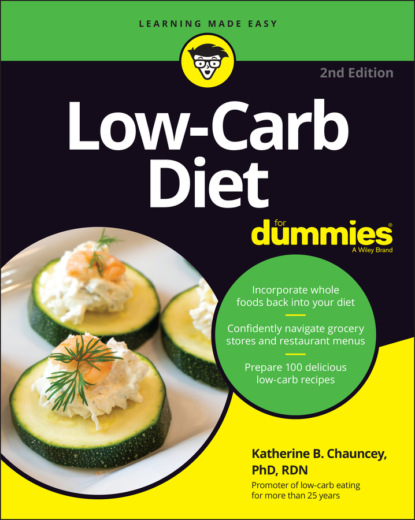Spotting early problems with blood pressure
Blood-pressure readings are expressed in two numbers that reflect the pressure on artery walls when the heart contracts. Turn to Table 4-3 for information on what your blood pressure reading means.
TABLE 4-3 Blood Pressure Reading
| Blood Pressure Classification | Systolic (Top Number) | Diastolic (Bottom Number) | |
|---|---|---|---|
| Normal | Less than 120 | and | Less than 80 |
| Elevated | 120 to 129 | and | Less than 80 |
| High Blood Pressure (Hypertension) Stage 1 | 130 to 139 | or | 80 to 89 |
| High Blood Pressure (Hypertension) Stage 2 | 140 or higher | or | 90 or higher |
| Hypertensive Crisis (consult your doctor immediately) | Higher Than 180 | and/or | Higher than 120 |
New guidelines for blood pressure readings were issued by the American Heart Association, the American College of Cardiology, and nine other health organizations in 2017. These new guidelines lowered the thresholds for blood pressure readings. Health officials recognize a category for blood pressure called elevated. If the top (or systolic) number in your blood pressure reading is between 120 and 129 and if the bottom (or diastolic) number is less than 80, you have elevated blood pressure. Elevated is a blood pressure that doesn’t require treatment with medication but still can increase your risk of heart disease and stroke. These guidelines along with medication when indicated encourage you to make lifestyle changes such as losing weight, exercising, quitting smoking, or reducing alcohol intake. A dietary approach known as Dietary Approaches to Stop Hypertension (DASH) and the Mediterranean Diet have been shown to reduce blood pressure. The low-carb Whole Foods Weight Loss Eating Plan described in this book incorporates the principles of the DASH Diet and the Mediterranean Diet.
Understanding the relationships between ethnicity and health risks
Certain diseases seem to be more prevalent in some races than others. So, with no other issues in your family health history, you still may have risk factors for several diseases just by belonging to a particular ethnic group.
Here’s a quick list of some ethnicity-related health concerns. If you belong to any of these groups, pay special attention to the health risks associated with them.
Blacks:Have an increased risk for diabetes and insulin resistanceAre five times more likely than Caucasians to develop kidney disease if diabeticHave the highest heart-disease risk and an increased risk for high blood pressure
Asians:Have an increased risk for osteoporosis (especially women)
Caucasians:Have an increased risk for osteoporosis (especially women)
Latinos:Have an increased risk for diabetes and insulin resistanceAre over six times more likely to develop kidney disease if diabetic
Native Americans:Have an increased risk for diabetes and insulin resistanceAre six times more likely to develop kidney disease if diabetic
Be Honest! Examining Your Current Diet and Lifestyle
After you have an idea of your health status and history, look at your lifestyle. The good news here is that, unlike your age or your family history, you can make changes to your lifestyle. Some of the risk factors you can change include the foods you eat, how much physical activity you get, whether you smoke, and how much alcohol you drink. If you have family tendencies for diabetes, heart disease, cancer, high blood pressure, and obesity, or if you’re starting to show early signs of the conditions yourself, your diet and lifestyle can make those conditions worse or better.
These sections help you evaluate what you eat, how much exercise you get, and what your stress levels are so you can begin to make positive changes.
Paying attention to what you eat
An important factor in determining whether a low-carb eating plan is right for you is your willingness to look at your current eating habits. But you can’t figure out where you want to go if you don’t know where you are. What you need to do is keep track of what you eat so you can then determine how healthy it is.
Recording it
How frequently do chips, crackers, cookies, fast foods, soft drinks, snack foods, cakes, or desserts appear in your food intake? You may not even know the answer to that question. Eating is such a normal daily activity that you may be unaware of what you put in your mouth on a regular basis.
Another option is to sit down and recall what you’ve eaten in the last 24 hours. Start with your most recent meal and track back for 24 hours. (The only problem with this approach is that you can easily forget about small snack items you ate, like bread or crackers, as well as beverages, all of which should be counted.)
No matter how you do it, develop a picture of your eating pattern. Interestingly, even with all the variety in the food supply, most people eat the same seven to ten meals on a regular basis. So, what does your dietary pattern look like?
Evaluating it
After you have a record of what you’ve eaten, you need to evaluate how healthy it is. To determine the number of servings you consumed, you’ll need to estimate portion sizes. You’ll be surprised to see that normal portion sizes are a lot smaller than you think. Here are some examples:
| Portion | Approximate Size |
|---|---|
| ½ cup |
About the size of a woman’s tight fist, or a tennis or billiard
|
